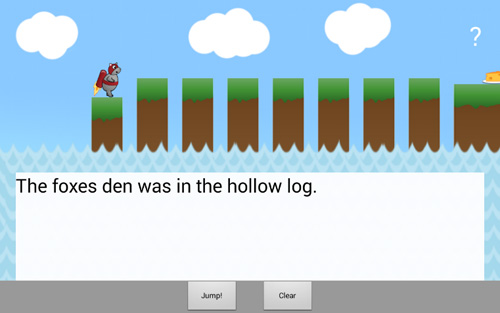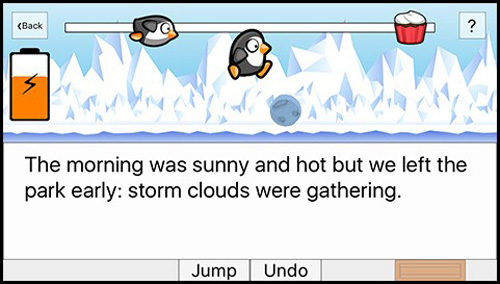By Erica Southgate (Associate Professor, School of Education) and Shamus Smith (Senior Lecturer, School of Electrical Engineering and Computing), The University of Newcastle, Australia.
Published in 1865, Lewis Carrol’s Alice in Wonderland continues to permeate popular culture (think Janelle Monae’s song Wondaland or the ‘Follow the white rabbit’ scene in The Matrix). The metaphor of going down the rabbit hole represents a special kind of liminality. Writing about transition in socio-cultural rites of passage, the anthropologist Victor Turner describes how liminality manifests itself in a temporary state of ambivalence:
During the intervening ‘liminal’ period, the characteristics of the ritual subject (the “passenger”) are ambiguous; he [sic] passes through a cultural realm that has few or none of the attributes of the past or coming state. The attributes of liminality or of liminal personae (“threshold people”) are necessarily ambiguous, since this condition and these persons elude or slip through the network of classifications that normally locate states and positions in cultural space. Liminal entities are neither here nor there; they are betwixt and between the positions assigned and arrayed by law, custom, convention, and ceremonial. (Turner, 1969, p. 359).
For Turner, experiencing a liminal state is an individual experience within a communal context. When Alice goes down the rabbit hole, she slips into a liminal space – one that is “betwist and between” her reality and that of Wonderland. In that tumbling instant, she becomes a ‘threshold’ person who differs from Turner’s “passengers” in that she is wholly unaware of where she will end up. We suggest that Turner’s concept of liminality, being ‘betwist and between’ is akin to the rabbit hole, and that these intertwined concepts offer an interesting lens for understanding aspects of inter/transdisciplinary knowledge production for serious (educational) computer game design. In this post, we reflect on some central features of liminality — its ephemeral nature, potential for creativity, and risky/disorienting quality — and our experience of serious game design.
To begin, it is worth defining approaches to knowledge production. Disciplinary knowledge is discrete knowledge (and ways of doing and knowing) associated with Western academic epistemological traditions; for example, history and its methods, or science and its methods. Beyond disciplinary knowledge, other approaches include the:
- Multidisciplinary approach which is additive: people from different discipline bring their knowledge together to address a problem, usually from separate angles;
- Interdisciplinary approach which is integrative or bridging: knowledge and methods from different disciplines are drawn together to address a problem;
- Transdisciplinary approach which seeks to create new methodological and theoretical frameworks by engaging with the above types of knowledge and epistemologies beyond academic systems (Jensenius, n.d.; Spelt et al., 2009)
To date, we have developed three serious computer games designed to improve the literacy of young adult and adult learners. The first two, Apostrophe Power and Sentence Hero, are in the platform game genre. In Apostrophe Power, the learner must drag the apostrophe into the correct position in a sentence under a time constraint before the mouse avatar drops into the water (see Figure 1). In Sentence Hero, the learner must correctly place the punctuation or word in the sentence within a time constraint as their self-selected avatar jumps over obstacles: the size of the obstacle is determined by how quickly the learner undertakes the task (see Figure 2). Both games are designed with ‘unlockable’ levels of difficulty. The third game, Robo WordQuest (to be released in late 2018, Figure 3), is a single-player, open-world virtual environment with a sci-fi narrative in which the learner, with a robot dog, must explore different dimensions of a strange planet in order to gather and attain ‘energy cells’ that can repair their crashed space ship. One way of achieving energy cells is to successfully complete literacy exercises related to punctuation use and paragraph construction.

In the first games we produced, we shifted between multi-disciplinary and interdisciplinary approaches (Southgate et al., 2015) with interdisciplinarity becoming more common during the development of the second game, Sentence Hero. For example, during the development process for Sentence Hero, the software developers still produced the software and graphics while the educationalists continued to create the literacy content; however, there was much more interdisciplinary decision-making regarding the relationship between the game mechanics and crucial aspects of learning. For example, we knew from pre-tests that there was great variability in undergraduate student knowledge of how to use certain types of punctuation correctly, particularly semi-colons and colons. In a platform game incorporating the game mechanic of time-constraint as a motivation tool meant getting the balance right between giving learners reasonable time to consider and complete the literacy exercise before their avatar is submerged in water or wiped out by ever increasing boulders.

This is a tricky business. There are no benchmarks for the time it takes to cognitively process information in games, especially serious games or for literacy, and we know that there is individual variation in this regardless of prior knowledge or competency. In funded projects, the strict time frames often make it impractical to implement an agile design protocol with students which would allow for the testing and trialling of an element like timing. It took the whole team to iterate on something as ‘simple’ as getting the timing as ‘right’ as possible for the platform games. This involved by bringing together our combined professional hunches derived from teaching students and our knowledge of how timing can affect motivation in game-play to make informed (but not evidence-based) decisions.
Inter-disciplinary decision-making of this kind reflects the risky nature of liminal knowledge production. Relying on professional hunches, no matter how deep the professional expertise, is a risky and unsettling experience: it is not until the game undergoes formal evaluation (at the end stage of development) or when you gauge App store downloads and feedback ‘in the wild’ that the team gets a sense of the soundness of their design decisions. Clinch et al. (2018) remark:
The liminal hotspot summoned by the requirement for researchers to move away from “thinking in silos” and to embrace alternatives that are not closely linked to what they already understand is “frightening.”
In our third game, Robo WordQuest, we constantly shifted along the continuum from disciplinary to trans-disciplinary knowledge production. Robo WordQuest, represented a substantial technical, pedagogical and cultural leap. It involved developing an open-world literacy game for deployment on mobile devices and, in demo mode, through immersive mobile virtual reality mediated via head mounted display. The experience of playing in an open-world virtual environment is different from a platform game. There is a substantial narrative elements (what is the story and how is it reflected in the design of the virtual environment, navigation and interaction options, non-player character’s and fun of game-play) and an emphasis on player-learner autonomy through exploration, problem-solving and the ability to customise. There were a couple if key features of Robo WordQuest that pushed it into transdisciplinary territory. The first was a focus on inclusiveness, especially gender and cultural inclusion through design. An inclusive design framework with a participatory research approach drove the design decisions (we are presenting a paper on this at the 2018 ASCILITE conference).
The impetus for deploying an inclusive design framework came from initial focus groups with our Indigenous colleagues who suggested that the game should have a narrative that all students could relate to and that Indigenous design should be subtly woven through the game so that Indigenous student would recognise these elements and feel motivated to play. The team, which consisted of Indigenous and non-Indigenous members, worked with an Aboriginal artist to create a series of ‘energy cells’ in the games that reflected traditional Aboriginal designs. Such collaboration shift the project into the transdisciplinary as respect for cultural knowledge and sensitivity was paramount. Understandings of inclusivity in game design transform when new learnings and creativity combine, and this unique combination of knowledges and practice can be a key feature of the liminal trans-disciplinary work.

One of the core features of liminality is its temporariness (Cross et al. 2015). The endless, invocations in higher education to ‘innovate’, ‘disrupt’, ‘fail forward’ and be ‘transformative’, are resoundingly hollow if they are conceived of as permanent ontological and epistemological states. Rather, the idea of the liminal allows up to understand knowledge production for innovation as ephemeral, as short or extended moments that involve constantly moving between and/or simultaneously deploying different modes of knowledge production from the disciplinary through to the trans-disciplinary. Furthermore, transdisciplinarity requires old-fashioned human qualities like humility, trust, and patience: “One virtue you need when working in trans-disciplinary research: patience. You must be very patient indeed” (Nowotny, 2004). Hailing trans-disciplinarity as a superior form of knowledge production is unwise, even if powerful knowledge and solutions can emerge from it. Rather, transdisciplinary knowledge production should be thought of as the ‘betwixt and between’, moments when new ways of thinking and practice can develop but always within a context of very risky, and sometimes frightening, creativity.
Transdisciplinarity continues to manifest itself in our thinking about the interconnected corporeal and affective dimensions of immersive virtual reality and the application of theories of embodied cognition (Wilson, 2002) for serious game design. This ongoing thought project extends itself in and through the fields of psychology, learning science, educational sociology, communication theory, human-computer interaction and game design. This is our current rabbit hole and, like all liminal spaces, it is a tumbling ride.
Apostrophe Power and Sentence Hero are available for free download from the Google Play and Apple App stores.
References
Cross, D., Swart, J., & Kinnie, N. (2015). The Liminality of Liminality; A systematic review of organisationally liminal spaces. In APROS/EGOS Conference. University of Bath.
Clinch, M., Shaw, S., Ashcroft, R., & Swinglehurst, D. (2018, Online First). Liminality in practice: A case study in life sciences research. BioSocieties, https://link.springer.com/article/10.1057/s41292-018-0128-x
Jensenius, A.R. (n.d). Disciplinarities: intra, cross, multi, inter, trans. http://www.arj.no/2012/03/12/disciplinarities-2/
Nowotny, H. (2004). The potential of transdisciplinarity. In H. Dunin-Woyseth, H. and M. Nielsen, Discussing Transdisciplinarity: Making Professions and the New Mode of Knowledge Production, the Nordic Reader, Oslo School of Architecture, Oslo, Norway, 10-19. http://www.helga-nowotny.eu/downloads/helga_nowotny_b59.pdf
Southgate, E., Smith, S. P., Stephens, L., Hickmott, D., & Billie, R. (2015). Interdisciplinary opportunities and challenges in creating m-learning apps: two case studies. ASCILITE 2015, 265.
Spelt, E., Harm, J. Tobi, H., Luning, P. & Mulder, M. (2009). Teaching and learning in interdisciplinary higher education: A systematic review. Educational Psychology Review, 21(4), 9113-9118.
Turner, V. (1969). Liminality and communitas. The ritual process: Structure and anti-structure, 94, 130. http://faculty.trinity.edu/mbrown/whatisreligion/PDF%20readings/TurnerVictor-%20Liminality%20and%20Communitas.pdf
Wilson, M. (2002). Six views of embodied cognition. Psychonomic Bulletin & Review, 9(4), 625-636.

[…] Learning English through games (University of Newcastle) […]